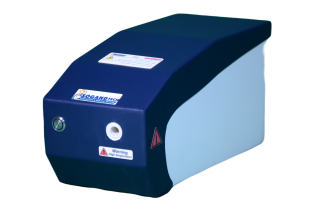Modern Loop Burner

:Usages in medical
:This device uses in microbiology and medical laboratories for safe and sterilization of metal instruments such as
:Inoculating loop
.Is a simple tool used mainly by microbiologists to pick up and transfer a small sample of microorganisms
:Inoculating needles
.It is also like Inoculating loops uses for transfer and inoculate living microorganisms
:Metal culture rods or Metal spreaders
.They are instruments used to evenly distribute cultures onto agar plates or other surfaces for analysis or propagation and can be L-shaped, T-shaped, or triangular
:Other usages in medical
| :definitions |
|---|
| :Sterilization of inoculating loops
.Inoculating loops are typically sterilized by heating them in a flame until they become red-hot, then allowing them to cool before use .This incineration process destroys any microorganisms present on the loop, ensuring sterile handling and preventing contamination of samples :Heating .Hold the inoculating loop (or needle) into the hole of device until it glows red-hot :Cooling .Allow the loop to cool for a few seconds before using it to transfer microorganisms .Pay attention that touching the loop to the culture while it’s too hot can kill the organisms you intend to transfer :Aseptic Technique .After sterilizing, ensure the loop is not touched to any surface to avoid re-contamination |
| :Prevention of cross- contamination
.cross- contamination is what happens when bacteria or other microorganisms are unintentionally transferred from one object to another .By sterilizing tools between uses, it ensures sample integrity, especially critical in clinical diagnostics, such as urine cultures, wound swabs, or throat cultures |
| :Safe alternative to open flame
.New loop sterilizers don’t use open flames which is safer in labs dealing with flammable materials or pathogens |
| :It uses in biosafety cabinets
.Biosafety cabinets (BSCs) are enclosed, ventilated laboratory workspaces designed to protect personnel, the environment, and the work being done from contamination .Since loop sterilizers don’t disturb airflow or release aerosols, it is suitable for sterile environments like laminar flow hoods or biosafety cabinets |
| :Standard procedure in medical microbiology
.Particularly in hospital labs, research institutions, and diagnostic centers, this device is part of standard aseptic techniques |
| :Modern loop sterilizer (flameless) | :Traditional loop sterilizer (with open flame) |
|---|---|
| :Sterilization Method
Uses an electromagnetic field to heat loops without an open flame.
|
:Sterilization method
.uses open flame (gas or alcohol) to heat and sterilize loops or needles |
| :Heat Source .Enclosed heating element (~800–1000 °C) |
:Heat source
.open flame, reaching >1000 °C |
| :Time to Sterilize
seconds~3-7
|
:Time to sterilize
~5-10seconds |
| :Aerosol Generation
.Minimal to none – no burning of organic matter in open air |
:Aerosol generation
.high- can produce aerosols when organic material burns off the loop |
| :Safety
.Much higher – no open flame, reduces fire and burn risk |
:Safety
.lower- open flames pose fire hazards and risk of burns |
| :Airflow Compatibility
.Safe for use in laminar flow hoods and biosafety cabinets |
:Airflow compatibility
.not safe for use in laminar flow hoods or biosafety cabinets (disrupts airflow) |
| :Portability
.Plug-and-play, more compact and portable |
:Portability
.Requires gas line or alcohol, less portable |
| :Maintenance
.Slightly more technical—ceramic elements may need replacement over time |
:Maintenance
.Simple, but needs fuel or gas connection |
| :Contamination Risk
.Greatly reduced due to enclosed heating and absence of flame |
:Contamination Risk
.Higher risk due to aerosols and open flames |
 |
 |
you can compare advantages and disadvantage of both traditional and modern loop sterilizer device and make your decision
,In conclusion
.modern loop sterilizer ensures maximum safety, contamination control, and efficiency, making it ideal for use in biosafety cabinets, clinical laboratories, and research environments
.this is a safe, reliable, and hygienic solution that meets the evolving demands of sterile technique in microbiology and medical diagnostics


